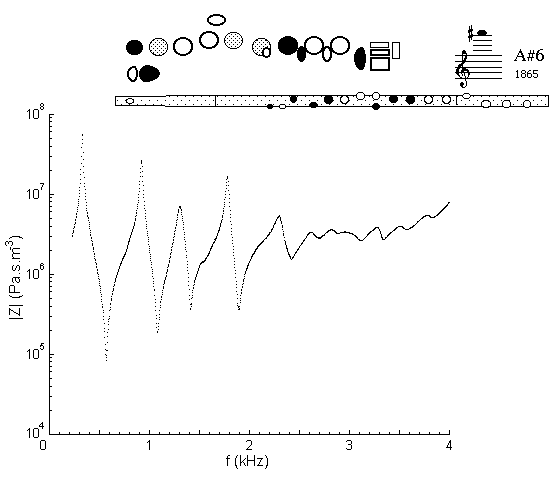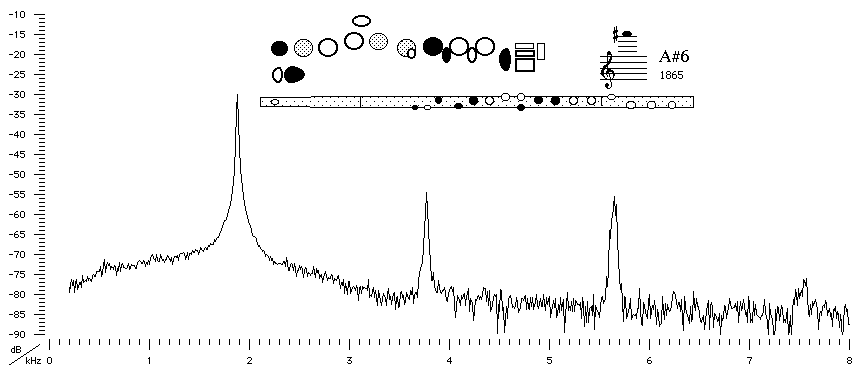| Acoustics of baroque, classical and modern flutes |
modern flute
|
A#6 |

|
Fingering Acoustic schematic Non-specialist introduction
to acoustic impedance |
This fingering is comparable to that for A#4 except for the use of one of the trill keys as a register hole, and a slight cross fingering effect from the RH 1st finger. The register hole creates a pressure node (or flow antinode) about three quarters of the way along the pipe, and thus allows A#6 but not A#4, A#5, or F6. Comparing this with the A#4 impedance spectrum, we see that the fourth minimum is little changed. The third is shallower and unplayable. The first minimum plays ~C#5 and the second ~C 5 but, because it is a cross fingering for these notes, their timbres are darker. Combinations of these three notes may be played simultaneously as multiphonics.
5 but, because it is a cross fingering for these notes, their timbres are darker. Combinations of these three notes may be played simultaneously as multiphonics.

Sound spectrum
of a modern flute with a B foot played using fingering for A#6.
![]()
![]()
![]()
![]()
![]() You can hear A#6
played by Geoffrey Collins.
You can hear A#6
played by Geoffrey Collins.
| Acoustic measurements are available for these flutes - modern B, modern C, classical C, classical D, classical flared, baroque Sound clips are available for modern B, classical flared and baroque |
To compare flutes, it is easiest to open a separate browser window for each instrument. |